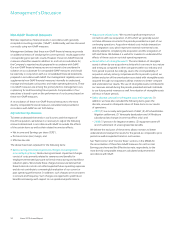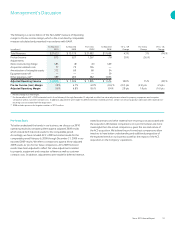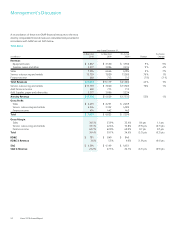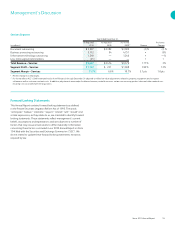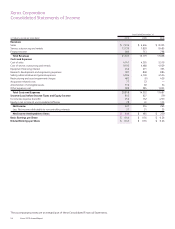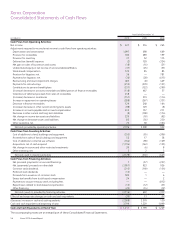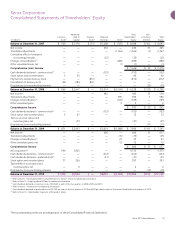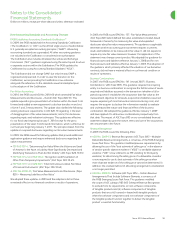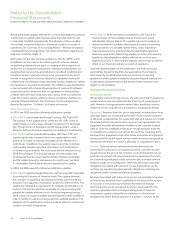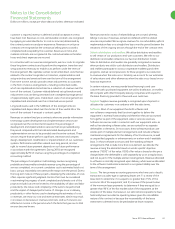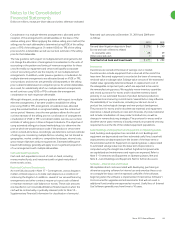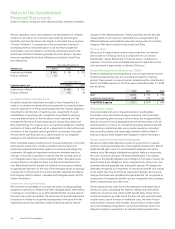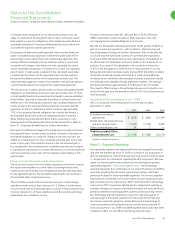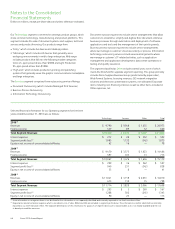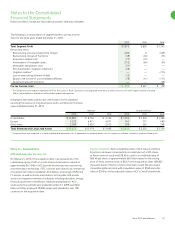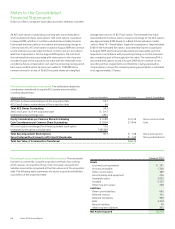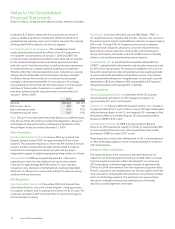Xerox 2010 Annual Report Download - page 62
Download and view the complete annual report
Please find page 62 of the 2010 Xerox annual report below. You can navigate through the pages in the report by either clicking on the pages listed below, or by using the keyword search tool below to find specific information within the annual report.Notes to the Consolidated
Financial Statements
Dollars in millions, except per-share data and unless otherwise indicated.
60 Xerox 2010 Annual Report
We adopted these updates effective for our fiscal year beginning January
1, 2010 and are applying them prospectively from that date for new
or materially modified arrangements. The adoption of these updates
did not have a material effect on our financial condition or results of
operations. See “Summary of Accounting Policies – Revenue recognition
– Multiple Element Arrangements” for further information regarding our
adoption of ASU No. 2009-13.
With respect to the new software guidance in ASU No. 2009-14, the
modification in the scope of the industry-specific software revenue
recognition guidance did not result in a change in the recognition of
revenue for our equipment and services. Software included within our
equipment and services has generally been considered incidental and
therefore has been, and will continue to be, accounted for as part of
the sale of equipment or services. Most of our equipment have both
software and non-software components that function together to deliver
the equipment’s essential functionality. The software scope modification
is also not expected to change the recognition of revenue for software
accessories sold in connection with our equipment or free-standing
software sales as these transactions will continue to be accounted for
under the industry-specific software revenue recognition guidance as
separate software elements. See “Summary of Accounting Policies –
Revenue Recognition – Software” for further information.
Other Accounting Changes
In 2010, the FASB issued the following codification updates:
ASU 2010-19
• which amended Foreign Currency (ASC Topic 830).
The purpose of this update was to codify the SEC staff’s view on
certain foreign currency issues related to investments in Venezuela.
See “Foreign Currency Translation and Re-measurement” section
below for further information regarding our operations in Venezuela.
ASU 2010-20
• which amended Receivables (ASC Topic 310) and
requires significantly increased disclosures regarding the credit
quality of an entity’s financing receivables and its allowance for
credit losses. In addition, this update requires an entity to disclose
credit quality indicators past due information, and modifications
of its financing receivables. The disclosures are first effective for our
2010 Annual Report. The principal impact from this update was
increased disclosures concerning the details of finance receivables
and the related provisions and reserves for credit losses. See Note
4 – Receivables, Net for the disclosures required by this update.
In 2009, the FASB issued the following codification updates:
ASU 2009-16
• which amended Transfers and Servicing (ASC Topic 860):
Accounting for Transfers of Financial Assets. This update removed
the concept of a qualifying special-purpose entity and removed the
exception from applying consolidation guidance to these entities. This
update also clarified the requirements for isolation and limitations on
portions of financial assets that are eligible for sale accounting. We
adopted this update effective for our fiscal year beginning January 1,
2010. Certain accounts receivable sale arrangements were modified in
order to qualify for sale accounting under this updated guidance. The
adoption of this update did not have a material effect on our financial
condition or results of operations.
ASU 2009-17
• which amended Consolidations (ASC Topic 810):
Improvements to Financial Reporting by Enterprises Involved
with Variable Interest Entities. This update required an analysis to
determine whether a variable interest gives the entity a controlling
financial interest in a variable interest entity. It also required an
ongoing reassessment and eliminates the quantitative approach
previously required for determining whether an entity is the primary
beneficiary. We adopted this update effective for our fiscal year
beginning January 1, 2010 and the adoption did not have a material
effect on our financial condition or results of operations.
Since the implementation of the codification, the FASB has issued
several ASUs. Except for the ASUs discussed above, the remaining
ASUs issued by the FASB entail technical corrections to existing
guidance or affect guidance related to unique/infrequent transactions
or specialized industries/entities and therefore have minimal, if any,
impact on the Company.
Summary of Accounting Policies
Revenue Recognition
We generate revenue through services, the sale and rental of equipment,
supplies and income associated with the financing of our equipment
sales. Revenue is recognized when earned. More specifically, revenue
related to services and sales of our products is recognized as follows:
Equipment: Revenues from the sale of equipment, including those from
sales-type leases, are recognized at the time of sale or at the inception
of the lease, as appropriate. For equipment sales that require us to install
the product at the customer location, revenue is recognized when the
equipment has been delivered and installed at the customer location.
Sales of customer-installable products are recognized upon shipment
or receipt by the customer according to the customer’s shipping terms.
Revenues from equipment under other leases and similar arrangements
are accounted for by the operating lease method and are recognized as
earned over the lease term, which is generally on a straight-line basis.
Services: Technical service revenues are derived primarily from
maintenance contracts on our equipment sold to customers and are
recognized over the term of the contracts. A substantial portion of our
products are sold with full service maintenance agreements for which
the customer typically pays a base service fee plus a variable amount
based on usage. As a consequence, other than the product warranty
obligations associated with certain of our low-end products, we do
not have any significant product warranty obligations, including any
obligations under customer satisfaction programs.
Revenues associated with outsourcing services are generally recognized
as services are rendered, which is generally on the basis of the number
of accounts or transactions processed. Information technology
processing revenues are recognized as services are provided to the
customer, generally at the contractual selling prices of resources
consumed or capacity utilized by our customers. In those service
arrangements where final acceptance of a system or solution by the


